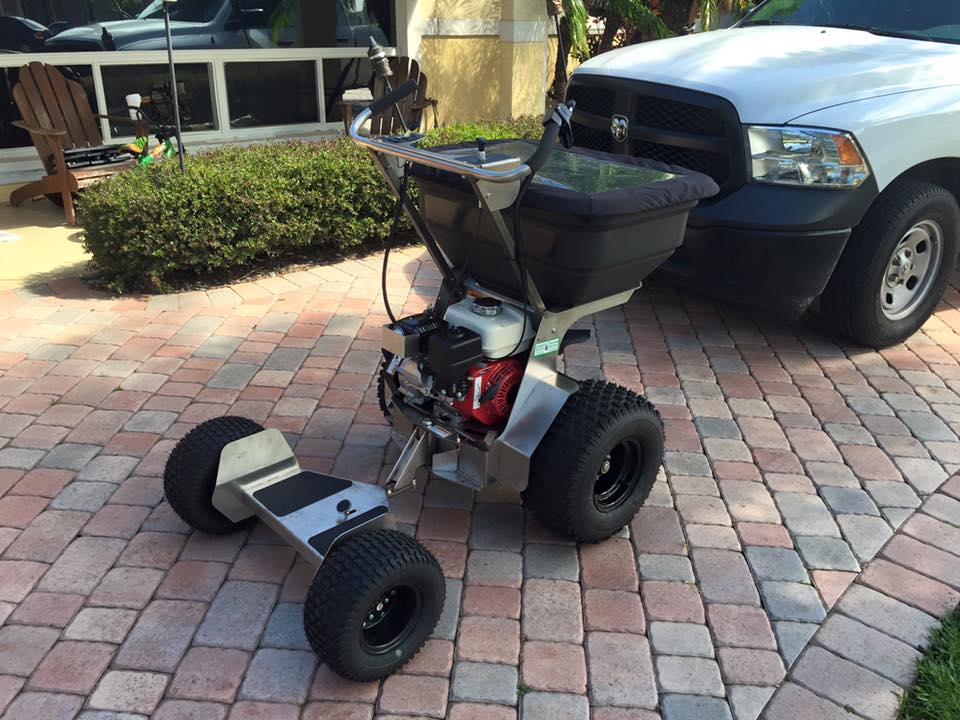
Sod Web Worms, also known as lawn moths, are usually ½ an inch to an inch long. They infest turf grasses in the United States and can be a major problem for any homeowner. These insects are usually dormant during the daytime, but feed on your grass during the night resulting in brown patches in your lawn.
The mole crickets compose family Gryllotalpidae, of thick-bodied insects about 3-5 cm (1-2 inches) long, with large beady eyes and shovel-like forelimbs highly developed for burrowing and swimming. They can also fly—the adult mole cricket may fly as far as 8 kilometers (5.0 mi) during mating season, is active most of the year, and spends the winter in hibernation. Younger insects can have shorter wings, and their appearance varies by species, with some resembling grasshoppers or very large ants or dark-colored “termites” when wings are short.
Most leaf spot diseases develop as small, scattered, circular to oval dead areas in the leaves; usually tan, dark brown, yellow, gray, purple, or black. Some spots are raised, shiny, and coal black, others may drop out leaving ragged holes; some are marked with light and dark concentric zones.
Numerous spots develop yellow, purple, red, or reddish brown to black margins; and later, in damp weather, increase in size and number and merge into large, angular to irregular dead areas. Heavily infected leaves may turn yellow to brown, wither, and drop early, weakening the tree. Occasionally, some leaf spotting fungi deform or kill flowers, buds, fruits, twigs, or even small branches.
Wood Rot fungi is another common wood destroying organism. Common signs are darkened areas of wood that are falling apart due to water intrusion. These areas are an attractant for carpenter ants as well as termites. A Sodium Borate imperative application is done for this infestation. It not only dries up the existing fungus but also leaves a residual. Of course it is important that any water intrusion is corrected.
Again an environmentally sound solution to your pest control problem.. Subterranean Termites is a termite that is underground, this problem is corrected by a non-repellant chemical that is injected into the ground around your foundation, where these termites have been known to gain entry to your biggest investment, your home.
Aphids, also known as plant lice are small plant-eating insects, and members of the superfamily Aphidoidea. Aphids are among the most destructive insect pests on cultivated plants in temperate regions. The damage they do to plants has made them enemies of farmers and gardeners the world over, but from a purely zoological standpoint they are a fascinating and very successful group of animals.
A sooty, gray-black and velvety, often crust-like coating may develop on the leaves, needles, fruits and branches of certain plants. The coating is actually the growth of one of several species of black-colored fungi or molds. Sooty molds often grow on sidewalks or fences under infested trees and are considered to be a cosmetic or aesthetic problem.
The chinch bug, a small North American bug (Blissus leucopterus) of the seed bug family. It feeds on small grains, corn, and other grasses, sucking the plant juices and doing much damage to crops, particularly in the Midwest. The adults, about 1/8 in. (3.5 mm) long, have black bodies with black and white wings, red legs, and red spots at the bases of the antennae. Both long- and short-winged forms occur.
There are two generations a year. The adults overwinter in sheltered places, emerging in spring to feed on early maturing grains, such as wheat and oats. They lay their eggs on the bases of the grasses or in the ground, and the nymphs, or larvae (see insect), emerge in about a week. Red when they emerge, the nymphs mature in five stages, turning gray or brown. They feed on the same grasses as their parents. When they reach the adult stage, in about six weeks, they migrate on foot to later-maturing grains, such as corn, which are still tender; there they lay the eggs that give rise to the second generation of the season.
Grubs White grubs are the larvae of Scarab beetles. More than a dozen different species may damage turf in the Southeast. All are C-shaped, white to dirty white in color, with brownish head and legs and usually with a darker grey area at the tip of the abdomen. The adults are medium-sized beetles that feed on a variety of trees and shrubs. Some of them, such as Japanese beetles and Green June beetles, are serious pests of ornamentals and certain fruits including figs, peaches and grapes.
Leaf miner is a term used to describe the larvae of many different species of insect which live in and eat the leaf tissue of plants. The vast majority of leaf-mining insects are moths (Lepidoptera) and flies (Diptera), though some beetles and wasps also exhibit this behavior.
Like wood boring beetles, leaf miners are protected from many predators and plant defenses by feeding within the tissues of the leaves themselves, selectively eating only the layers that have the least amount of cellulose. In attacking Quercus robur they also selectively feed on tissues containing low tannin levels, which the tree has produced in greater abundance as a defense.

Add Comment